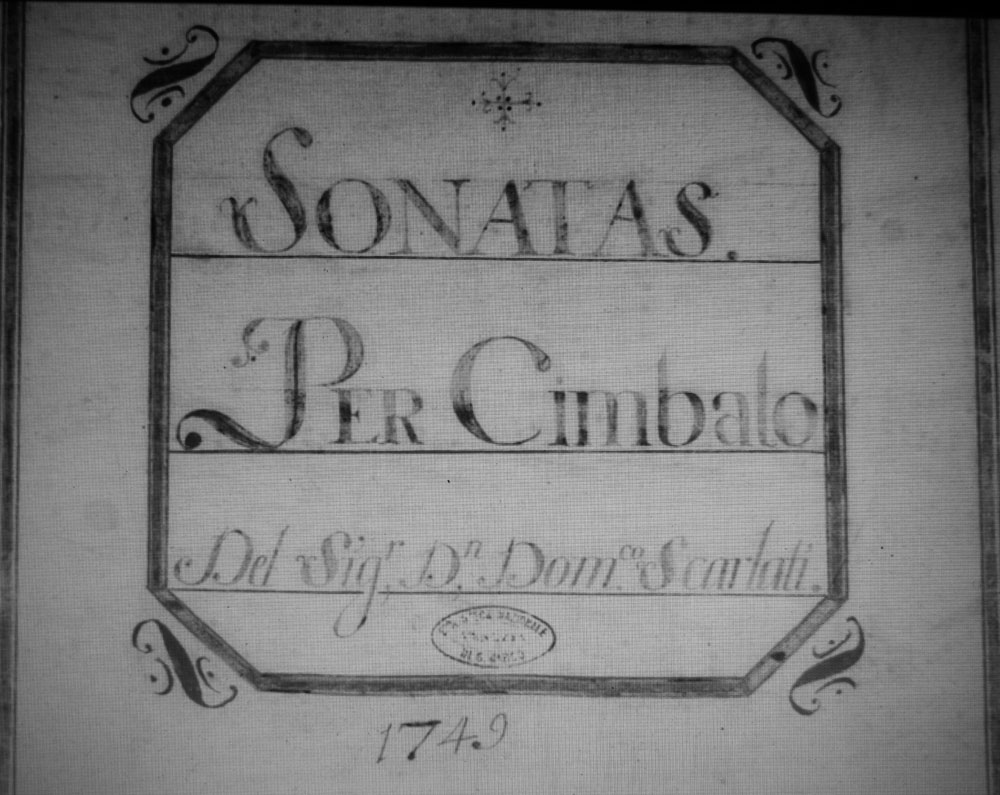
Effective Memorization For Classical Guitarists
This post will cover effective strategies for memorizing classical guitar pieces; it will narrow its focus to one particular strategy: memorization of the structure and theory of a classical guitar piece. The piece utilized to help learn effective memorization is Scarlatti‘s Sonata Kp. 322. There is a free download of its structure at the end of this post.
So you have spent the last 3 months learning your new guitar piece, its all come together nicely, their are no real technical issues, you are happy with the phrasing and feel ready to play it live and bonus without even trying you find you are even able to play it from memory. Does this situation sound familiar?
This is how most guitarists describe memorizing their pieces to begin with. They also describe how that first outing playing live did not live up to expectations; littered with pauses, memory slips and mistakes. So what went wrong and how can it be fixed? In nine cases out of ten this situation is easily remedied through effective memorization of the piece as a separate practice session; there are of course other issues to contend with such as: how was the piece learned and stress management which will be the focus of other posts. For now, in this post, it is about memorization of the theory. Which means learning how the piece is built and how the harmony is supporting that structure.
So, how do you memorize pieces and why should you?
Why
Let’s tackle the latter question first: why should you? This is easily clarified with a slight diversionary, and old cliched, joke about pianists and guitarists that goes something like this.
How do you stop a pianist playing? Simple, take their music away? How do you stop a guitarist playing? Put music in front of them!
Yes, the dreaded “R” word – reading. This joke highlights the strengths and weakness of two instruments and their relationship to learning music. Pianists rarely play from memory, they are battle hardened to reading on stage; they are also (and yes this is a huge generalization) terribly afraid of playing from memory. Most guitarists do not want or have the confidence to read music live. For guitar it is accepted that you play from memory; they are afraid of reading music on stage. These cliches really highlight the approach each instrument uses to interact and learn their pieces.
Bottom line then: For pianists every thing is there in front of them, the structure the harmony etc. for guitarists it means having that information buried within your memory.
How
There is a confidence in playing from memory, especially when the piece has been learned effectively. So how do you memorize classical guitar pieces? First we need to understand the large structure and slowly work down into the main harmonic foundations.
The piece, Scarlatti’s KP 3232, (here is a link to Youtube for the audio) is relatively challenging on the technical front but has a clear structure and harmony; it is a simple binary form: A B. This means there are only two sections and depending on your copy they are normally split between two pages.
Lets focus on the A section by asking a simple theoretical question:
What is the key and its first chord use?
We find it is in A major and begins with this chord; skipping to the end of the first section whilst asking the same set of questions we find it ends on and in E major. ( Chords still fuzzy? Check out this post on scale harmony)
Great! Now what? We really need some way of representing this material, and the piece’s structure, graphically. That’s were drawing the structure will aid memorization greatly. You can use the page provided below or make your own, drawing two boxes side by side and entering the info you have will leave you with this…
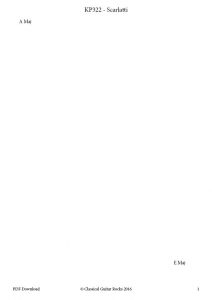
If you continue asking questions like this of the structure you will find that this piece can defined in terms of chords and keys. It can be as intricate or simple as you wish. Each step below adds more information to the understanding of section A’s structure, its harmony.
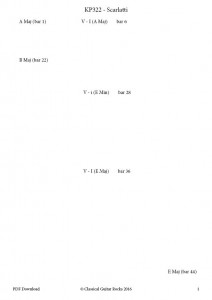
However the crux of this method relies on you being able to hear (and spot a full cadence) or understand where the piece has temporarily changed key – loads of extra accidentals are normally a dead give away for this.
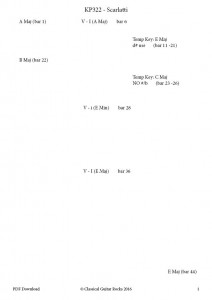
Top Tip: This piece is from the Baroque period and all cadences in this period were clearly marked with a V-I or ii-V-I chord progression.
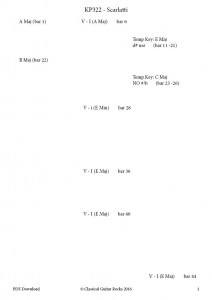
If you need help with this type of theory check out this post on cadences.
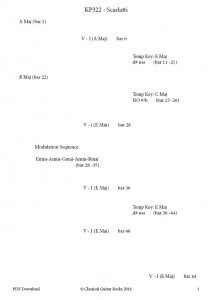
This theoretical method of effective memorization is very useful for learning the sign posts within a piece. So when you are playing from memory, you play from sign post to sign post with a clear road map to follow. An added bonus to this method is if it goes wrong mid performance you then have a pathway back into the piece, the last sign post you passed.
Finally
Playing from memory relies on five systems we as humans utilize everyday: sight, sound, understanding, prior knowledge and imagination. We will look into how each of these relates to the guitar in future posts.
For the record today was about understanding and utilizing prior knowledge (theory).
To end this post here is the great Vladimir Horowitz playing this Sonata on piano, from memory.
Below is a free download of the entire analysis of Kp322 for use and dissemination.
Free Download
Scarlatti Kp322 Analysis




